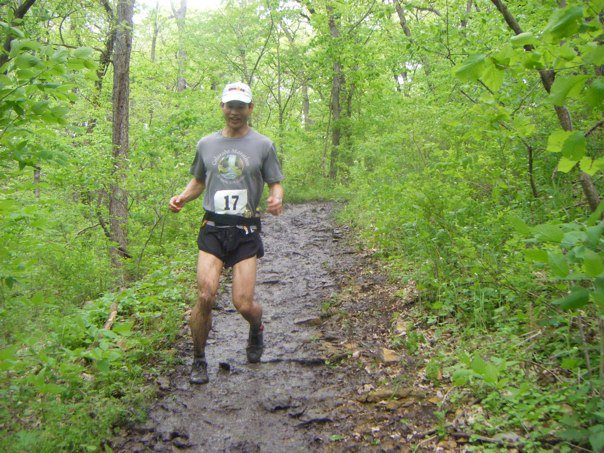Pain-Free Running Seminar
Considering that something like 70% of all runners get injured, it seemed like learning how to avoid injury was a good idea. Hence, Brett, Rebekah, Raquel, myself and about three dozen other running enthusiasts attended a free Pain-Free Running Seminar hosted by Rebound Sports & Physical Therapy.
“Watch,” joked Raquel, “they’ll tell us pain free running = ‘don’t run.'”
In fact, the “don’t run” option was only mentioned once or twice as the speakers probably knew that such advice would be completely lost on an audience that was comprised of bona fide running maniacs. The presenters included:
- Dr. Steve Yemm, Sports Medicine Specialist at Orthopaedic Center of the Rockies
- Jon Sinclair, World class runner, coach and author
- Brad Ott, Physical Therapist & Owner of Rebound Sports & Physical Therapy
Dr. Yemm kicked off the seminar by stressing how running is one of the best (time efficient) activities one can do for the body, with benefits including better cardiovascular health and reduced risk of osteoporosis due to its weight-bearing nature. That said, improper running can put one at risk to a whole range of multi-syllabic conditions such as illiotibial (IT) band syndrome, plantar fasciitis, Achilles tendinitis, foot fractures, “runner’s knee,” and even broken fibias. Essentially, it sounded like a runner could possibly injure any single bone, tendon, muscle, and cartilage below the belly button. Enough said.
Brad Ott talked about how “the foot bone is connected to the leg bone, the leg bone is connected to the knee bone, the knee bone is connected to the thigh bone.” Therefore, muscles and joints act as connected units and that a knee injury could very well be due to some sort of imbalance at a different location (say, the hip). The more symmetrical one’s posture is while running, the less prone he will be to injury. His practice could analyze a client’s posture, alignment, joint range, gait, etc.
I found Jon Sinclair’s presentation particularly interesting and informative as he talked less about the “what” and “why” of running injuries and more about what a person could actually do to prevent them. Below are some notes from the top off my head:
- Each individual has a different level of injury proneness. In general, however, youngsters need to be MORE careful about ramping up mileage than a seasoned runner. For example, he would not recommend a 20-year-old to increase his mileage more than 10% a week, but he has seen plenty of older runners who have been able to increase their mileage from 20 to 60 almost instantaneously without problem. (I suppose I could be an example of the latter.)
- Studies have shown that running more than 50 miles a week did not provide additional cardiovascular benefit versus running only 50, but it significantly increased the risk of injury. But he did dispute the first part of those findings by saying that in his experience at the elite level, the performance difference between someone who runs 120 miles/week vs 50 miles/week is “substantial.”
- He favored minimalist shoes and noted that he’s used the Nike Air Pegasus and another Nike shoe for the last 25 years. (Note: at 11.7 ounces, many people would argue that the Air Pegasus is not exactly minimalist.) He did say that most experts agree that shoes should be replaced every 400 miles, and that was probably the easiest thing a runner could do to prevent injury.
- “Fat is protective,” and people with ultra-low body fat have a higher risk of injury. He noted an extreme example where a local elite female runner would intentionally gain 15 pounds as protection against injury when she was training hard, but try to lose those 15 pounds in time for a major race. Such yo-yo-ing in weight doesn’t sound healthy to me, but is illustrative of what lengths elite racers will go to in order to avoid getting hurt.
- Speed work increases the risk of injury.
- Sleep is vital for recovery. He gave an example of a client who traveled a lot and hence was often sleep deprived, and during those sleep-deprived weeks he’d have to cut back on mileage by as much as 75% or else he’d get injured.
- He stated that weight lifting does not help a runner’s performance. Leg presses, squats, calf raises, etc. can actually make one more prone to injuries by putting the runner’s legs in a persistently fatigued state. If one likes to weight lift during intense training cycles for running, he should limit the weight work to the upper body. Strength training for the lower body while running should be limited to hill work.
- Cross-training (e.g., triathlon) will make a person an all-around fitter person, but not a better runner. The only way to get better at running is to run.
That’s all I can remember for now; maybe Brett, Rebekah and Raquel have something to add.
Jon concluded (in answering a question) by saying that he has lots of clients who want to “be the best runner they can be,” but the only way one can do that (literally speaking) is to do nothing but run, eat and sleep.
Personally I like Raquel’s idea of “sitting on the couch and not running” to be pain-free a bit more than running every free moment of my life, but I think I will try to strike a happy medium while avoiding injury, thank you.

One comment:
Thanks so much for taking such great notes!!!